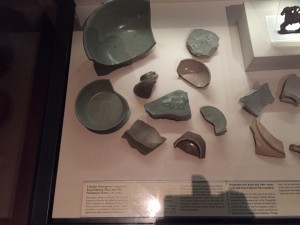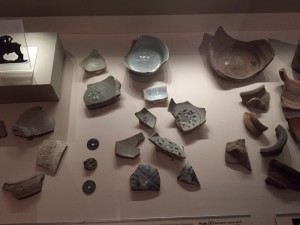Variety of Porcelain Excavated from Empress Place.
Celadon (Greenware), Dehua (Whiteware), and Blue-and-White Porcelain; 14th Century.
Excavated from Empress Place recently in April 2015, these artefacts have been dated around 14th century, bringing new insight into Singapore’s trade in the past. Under the once thriving port, archaeologists discovered around 400 kilograms worth of artefacts. These porcelains suggest that Singapore had its doors open to trade with China way back, and that perhaps there was a large amount of trade such that so many artefacts could be recovered.
Although these porcelains are mostly broken, there is a story behind each piece. Their existence makes us question about their worth to the people of that era. Porcelain is precious to us now, but was it back then? For these porcelain to be broken and thrown away suggests that perhaps these wares were easily replaceable? Are these shards perhaps the result of a careless trader who dropped his wares, or maybe they are shards that make up a well-used bowl for daily eating?
more to read:
http://www.channelnewsasia.com/news/singapore/empress-place-dig-yields/1787534.html


So, your object is ceramics? Why are ceramics generally found in shards? What kind of a site was Empress Place in the 14th century? (was it a garbage dump, a cemetery, a trading place?) Do you want to focus on one type of ceramic found in Singapore or all of the shards? Do you have any good textual sources? Have you looked at John Micsick’s latest book?